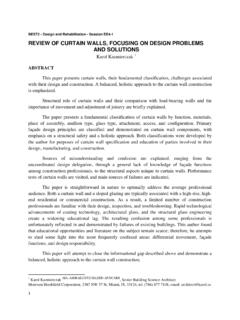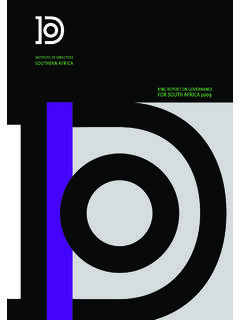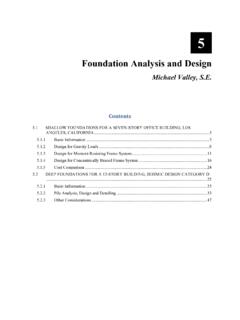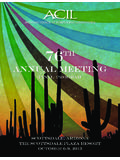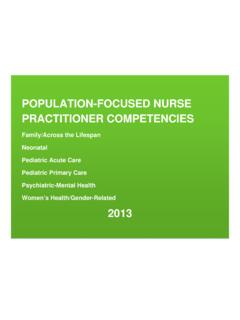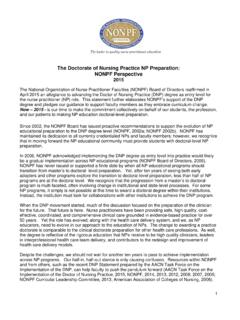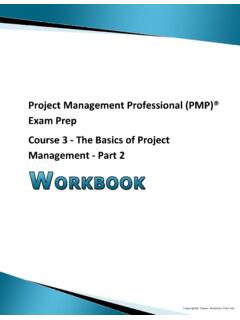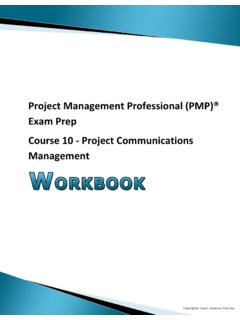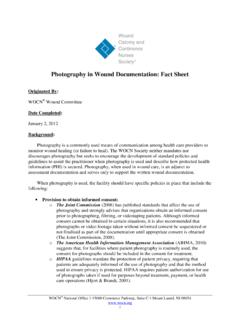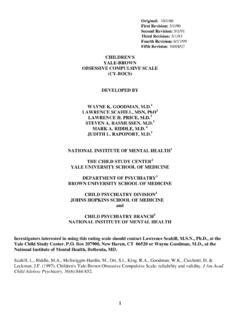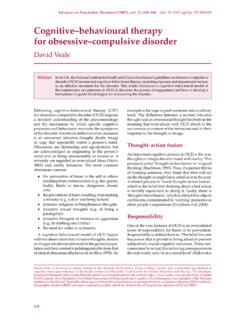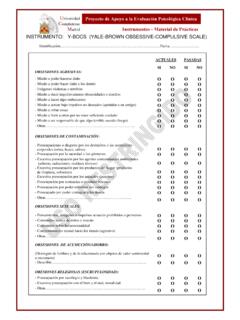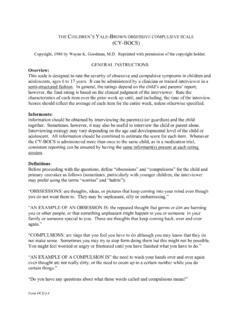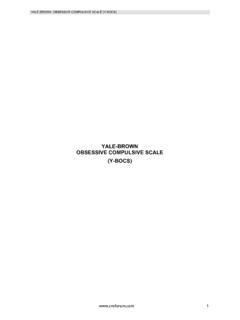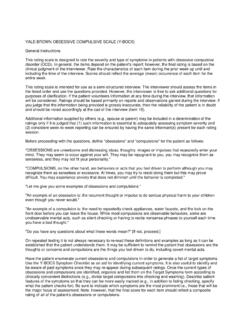Transcription of The Basics of Exposure Therapy for Obsessive Compulsive ...
1 Introduction to Exposure Therapy for Obsessive Compulsive DisorderKatherine L. Muller, , ABPPD irector& FounderValley Center forCognitive Behavioral TherapyCenter Valley, PAThe Exposure Exposure Therapy for OCD: Workshop Agenda What is Exposure Therapy ? Treatment Components Doses of Exposure Therapy Examples of Exposure Therapy for OCD Discussion/QuestionsWhat is Exposure ? Exposure is a procedure in which you purposely confront objects or situations that prompt distress You stay in those situations long enough for your anxiety to decrease by itself Habituation You may believe that your discomfort will last forever unless you avoid or escape such situations You may feel as if you couldn t handle such a situation As you will find out, this is not true. At first, you can expect to feel anxiety or discomfort. After Exposure practice, these situations will no longer make you feel as uncomfortable as they once did (you get used to it ) This process is called habituation(Foa et al, 2002) Exposure & Ritual Prevention for OCDEX/RP is a type of cognitive behavioral psychotherapy that is designed to breaktwo types of associations that occur in OCD: The association between sensations of distress and the objects, situations, or thoughts that produce this distress ( obsession = anxiety up ) The association between carrying out ritualistic behavior and decreasing the distress ( compulsion = anxiety down ) EX/RP breaks the automatic bond between feelings of anxiety and ritual behaviorsHow does EX/RP work?
2 Obsessions Goal is to demonstrate that we can have thoughts and experience distress without losing control or having to shut anxiety down Exposure is the key intervention Compulsions/Rituals Goal is to demonstrate that rituals are short-term anxiety reducers that ultimatelyincrease obsessions RITUAL PREVENTION is the key interventionOCD Treatment Guidelines (2007) CBT and serotonin reuptake inhibitors (SRIs) are recommended as safe and effective first-line treatments for OCD CBT that relies primarily on behavioral techniquessuch as Exposure and response prevention (ERP) is recommended because it has the best evidentiary support*American Psychiatric Association. Practice guideline for the treatment of patients with Obsessive - Compulsive disorder. Am J Psychiatry 2007; 164(suppl):1 56. Available online at: Success Rates Within the span of about 20 years, the prognosis for individuals with OCD has changed from poorto very goodas a result of the development of ERP.
3 (Abramowitz, 2006) Exposure and response prevention (ERP) appears to be the most effective treatment currently available, with 50-60% recovered. (Fisher & Wells, 2005) About 7 out of 10 people with OCD will benefit from either medicine or CBT, specifically EX/RP (Griest & Jenike, 2009) *brain changes* Typical OCD symptom reduction: Medication 40-60%, CBT 60-80% Up to 25% of patients REFUSE or DO NOT COMPLETE Exposure Research needed here; See Muller & Schultz, 2012: Components of Treatment Assessment of Symptoms Psychoeducation Assessing Anxiety: The SUDS scale Developing the Exposure Hierarchy Banning Rituals Exposure : In-session, In Vivo, Imaginal, Homework, Home work MaintenanceAssessment of Symptoms Clinician assesses presence of cardinal features of OCD for diagnosis Clinician assesses history, severity, and level of impairment of symptoms Clinician assesses type of obsessions and compulsions to tailor treatment yale brown Obsessive Compulsive Scale (Y-BOCS; Goodman , Price , Rasmussen , et al.)
4 The yale brown Obsessive Compulsive Scale:Development, use, and reliability. Arch Gen Psychiatry 1989;46:1006 1011)PsychoeducationInformation about OCD including: Theories of the development of OCD Statistics about OCD (1 in 100 adults, 1 in 200 kids) Common symptoms Available treatments and their effectivenessIntroduction to EX/RP: Goals of treatment Review of treatment components (with examples!)Assessing Anxiety: The SUDS scale Anxiety temperature Subjective Units ofDistressScale Ratings based on 0-10 or 0-100 scaleDeveloping the Exposure Hierarchy The anxiety ladder List of feared and avoided things, places, situations MUST look at reasons (fear, bad things, bad thoughts, just doesn t FEEL right ) Each item receives a subjective SUDS rating Items are ranked in order from least distressing to most distressing Serves as the backbone of the exposures Banning Rituals Exposure is important, but rituals/compulsions must also be addressed When the Exposure phase begins, rituals must be banned Not doing rituals aids in Exposure , allows for full immersion in anxiety Shows that rituals are NOT the only way for anxiety to dissipate EX or RP alone not as effectiveExposure Systematic, based on the hierarchy In Vivo- in the life/living , real life situations With therapist in session As homework Imaginal- using the imagination to picture being in the Exposure situation Home work- Therapy sessions in the individual s home/work environmentMaintenance Review of gains made in treatment Plan for continuing exposures completed in Therapy Script for coping with new obsessions and urges to perform rituals Once you have the tools.
5 You can apply them to ANYsituation. Does it make you anxious? Do it! Does it make you less anxious? Stop it! Doses of Exposure Therapy Intensive Treatment Programs Weekly Treatment Guided Self-help Self-helpA few notes about Exercises must be well-designedand systematic Must do exercises correctly for Exposure to work (no safety behaviors , no disconnecting ) What you get out of Exposure and ritual prevention depends heavily on what you put into it (homework practice is key) Examples of Exposure TherapySample hierarchy:ItemSUDSPut mail in mailbox, do not open to check25 Unplug iron, leave room without checking30 Walk away from door, no checking lock45 Not calling husband to see if he got to work safely60 Driving down Route 9 without stopping to check 80if hit someone/somethingMorgan MTV s documentary True Life: I Have OCD Age 23 Fear that something bad will happen to her mother / mother will die Does rituals to try to prevent this, , praying, lining objects up, avoids seeing blood Clip of her in-session/in-vivo exposureJessica MTV s documentary True Life: I Have OCD Age 18 Fear of / worry about vomiting If I do something wrong, I may vomit , does rituals to prevent vomiting Clip of her homework exposures Stephanie BBC / DiscoveryChannel documentary Obsessions: Who s Normal Anyway?
6 Fear of contamination, involving her son catching a disease Clip of her home work Exposure with her therapistThe Role of Reassurance Many people with OCD ask for reassurance This is a ritual Therapist will identify reassurance seeking (active and passive) and will point it out Reassurance may interfere with the Exposure (temporarily reduces anxiety that is needed to promote habituation)Finding an Exposure Therapist Ask about: Training and experience providing EX/RP Assessment procedures they use Do they offer home work and out-of-office Exposure sessions? Have them explain EX/RP to you Where to find an Exposure therapist: (*Excellent resource, printable forms, etc.) Established expert treatment centers for OCD-call / email for referralsResources Training in Exposure Therapy for OCD Center for the Treatment and Study of Anxiety at University of Pennsylvania; Dr. Edna Foa: Books and Articles Exposure and Response (Ritual) Prevention for Obsessive - Compulsive Disorder: Therapist Guide (Treatments That Work series) by E.
7 Foa, E. Yadin, & T. Lichner, 2012, Oxford University Press. (*client workbook also available) Getting Over OCD: A 10-Step Workbook for Taking Back Your Life (Guilford Self-Help Workbook series) by J. Abramowitz, 2009, Guilford Press. Intensive & Inpatient OCD Treatment Programs The OCD Institute at McLean Hospital, Belmont, MA: Stephanie s Final CommentsKatherine L. Muller.
